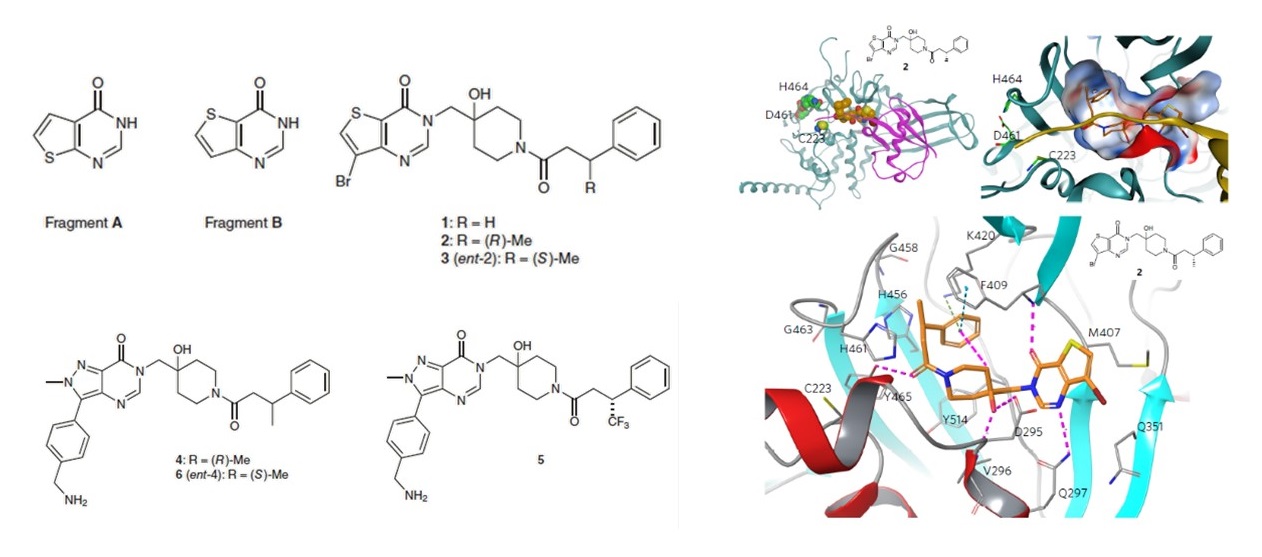Business Need
Almac Discovery wanted to identify novel and selective inhibitors for a number of ubiquitin-specific proteases – including USP7 – with the ultimate aim to develop novel cancer therapeutics for patients in need.
Technical Challenges
The identification of specific inhibitors of USPs is a significant challenge and the protein has for many years been reported as undruggable. A key factor behind this is the exceptionally high level of intrinsic non-specific ligand binding that USP7 exhibits, leading to false positives when screening. A second challenge for the project was the lack of reference compounds at the time. Finally, the high level of homology across the USP family makes it difficult to achieve selectivity.
Solution
Beactica’s team of highly skilled scientists applied the Company’s proprietary fragment-based drug discovery platform with an experimental design that enabled the progress of multiple USPs in parallel whilst managing the technical challenges.
Results
Multiple novel fragment hits with well-defined interaction mechanisms and a high level of specificity were identified for each of the USPs.

The Beactica hits provided high-quality starting points for new chemistry programmes and enabled the generation of ”perhaps the most potent small-molecule inhibitor of USP7 to date” [2] which also had extremely high selectivity against other USPs and target classes.
Almac presented a poster entitled "Development of novel potent, selective and cell-permeable USP7 inhibitors" at the Discovery on Target conference in Boston in October 2014.
Almac partnered an undisclosed USP programme with Genentech in June 2015 in a $349M deal.
Almac published the USP7 story in Nature Chemical Biology in December 2017 [1].
References
[1] Gavory G, O'Dowd CR, Helm MD, Flasz J, Arkoudis E, Dossang A, Hughes C, Cassidy E, McClelland K, Odrzywol E, Page N, Barker O, Miel H & Harrison T (2017) Discovery and characterization of highly potent and selective allosteric USP7 inhibitors, Nat Chem Biol, 14:118–125, doi: 10.1038/nchembio.2528.
[2] Zhang W & Sidhy SS (2018) Allosteric inhibitors hit USP7 hard. Nat Chem Biol, 14:110–111, doi: 10.1038/nchembio.2528.
Stay Updated
Sign up for the Beactica newsletter to receive our latest news and updates
